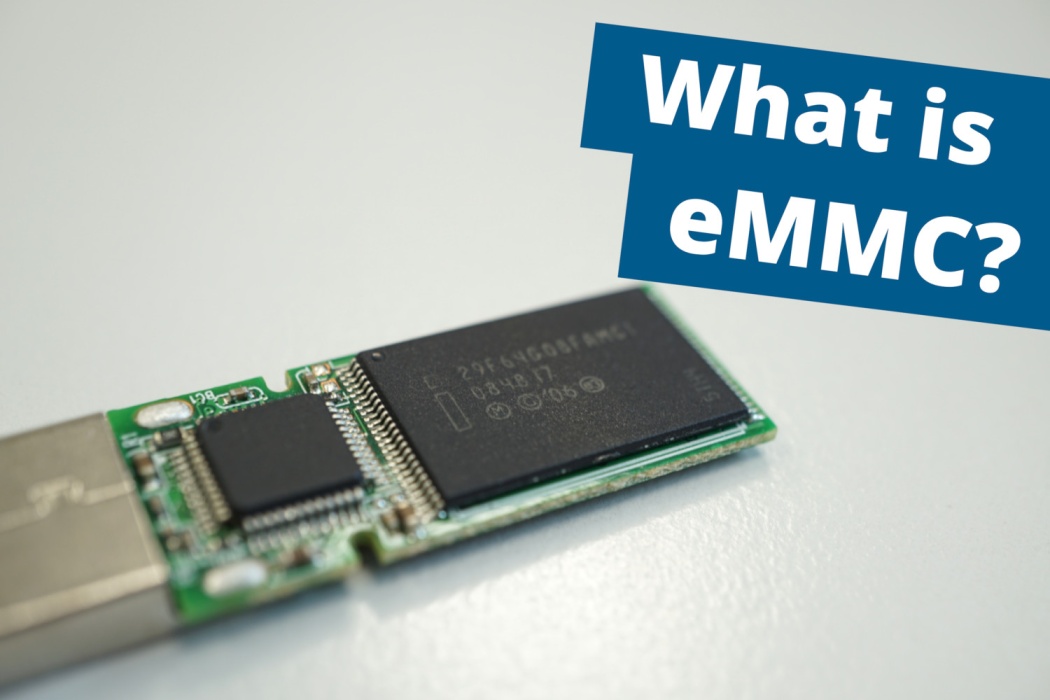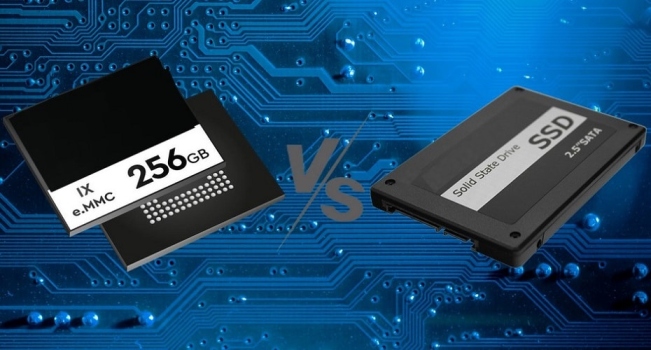For those of you who are familiar with the world of gadgets, eMMC is one of the main components that is very important. But for those of you who don’t know what eMMC is, we’ll explain it to you.
Understanding eMMC and its Functions
eMMC stands for Embedded Multi Media Controller. The function of eMMC is as a high-speed storage medium as well as a controller module. Currently eMMC is widely used by smartphones, digital cameras, tablets, navigation systems (GPS), media players, and cheap laptops. In general, eMMC can be considered as internal storage memory.
If we used to know the term MMC (Multi Media Card) or external storage card for old school cellphones like Nokia Symbian, now MMC has evolved into eMMC. MMC on smartphones is now embedded directly into the motherboard. Therefore, the term MMC is now added with the letter “e” which means “embedded.” eMMC uses NAND Flash Memory and works in a similar way as a flash, SD Card, or SSD.
The eMMC form is like a chip and is embedded directly into the motherboard. Because it is a chip, many people often equate eMMC with an SSD or an internal memory chip on a laptop. However, it is clear that these two types of memory are different. What are the differences between eMMC and SSD?
The difference between eMMC and SSD. Anything?
The most striking difference between SSD and eMMC is their size. SSD size is larger than eMMC because it is adapted for larger devices. SSDs are more often used in laptops or desktop PCs, while eMMC is more widely used in small electronic devices such as cellphones, tablets, and digital cameras.
The second difference is that the SSD can be removed from the motherboard. Meanwhile, eMMC is embedded directly into the motherboard so it is impossible to upgrade. The SSD on a laptop can be easily removed, therefore making it easier for laptop users if you want to replace the old SSD to a new SSD that has a larger capacity and faster performance.
The third difference between SSD and eMMC is in terms of performance. The latest generation of eMMC is currently able to transfer data at speeds up to 400 Mb/s. This means that eMMC data transfer speeds are almost the same as SSDs in general. However, even though it can transfer data quickly, the multitasking ability of eMMC is still lower than SSD.
eMMC is indeed quite fast when moving large data, but when used to move large amounts of data, there will be a decrease in performance. This is different from SSDs, because they are designed for laptops or PCs, therefore, SSDs are able to move large and large amounts of data faster than eMMC.
Pros and Cons of eMMC vs SSD
eMMC and SSD are 2 different types of storage media. The two cannot be equated because these two memories have different purposes. eMMC is memory designed for small or mobile devices such as cellphones, tablets, and digital cameras.
Meanwhile, SSDs are designed for computer devices such as laptops or desktop PCs. Although eMMC is only suitable for small devices, there are also laptops that use eMMC as internal storage media, for example the Lenovo IdeaPad 100s.
The following are what are the advantages and disadvantages of eMMC and SSD.
Advantages of eMMC
- 1. Cheaper price than SSD
- 2. More suitable for small devices with light workload
- 3. Suitable for cheap cellphones, tablets, and laptops
- 4. eMMC capacities vary, from 16 GB to 512 GB.
Disadvantages of eMMC
- 1. It is embedded so it cannot be upgraded or removed
- 2. Lower multitasking performance than SSD
- 3. Not suitable for heavy workloads.
SSD Advantages
- 1. Designed for laptop or Desktop PC
- 2. Faster performance, even faster than HDD
- 3. Can improve overall system response Suitable for heavy work, such as graphic design and gaming
- 4. Large capacities ranging from 128 GB to 4 TB.
Disadvantages of SSD
- 1. The price is more expensive
- 2. Not suitable for small electronic devices, due to their larger size.
eMMC is the most suitable type of memory chip for cellphones, tablets, and digital cameras. Its small size but large storage capacity makes eMMC ideal for mobile devices. However, you can’t confuse eMMC with SSD because they are two different types of memory. eMMC is more suitable for cellphones and SSDs are more suitable for laptops or desktop PCs that are larger than cellphones.
More on Technology









